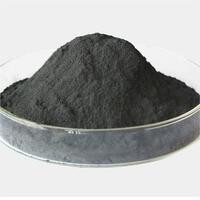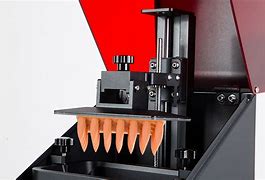Squirt, Stack, Solidify: The Secret Sauce Behind 3D Printer Creations
(What Is The Material Used In A 3d Printer To Print Called?)
Ever stared at a 3D printer mid-print and wondered what magic goo it’s spitting out to build that phone case, toy dinosaur, or fancy vase? The answer isn’t “robot spit” or “plastic fairy dust.” It’s called filament. Think of it as the raw clay of the 3D printing world. But this clay isn’t dug from the ground. It’s engineered, melted, and squirted layer by layer to turn digital dreams into real-life stuff.
Filament comes in skinny spaghetti-like strands, coiled neatly on spools. Most 3D printers heat this string until it’s gooey enough to squeeze out of a tiny nozzle. The printer head moves like a robotic glue gun, tracing shapes one layer at a time. As the material cools, it hardens. Repeat this a thousand times, and boom—you’ve got a 3D object. Simple? Kind of. But the real fun starts with the types of filament available.
PLA is the crowd favorite. Made from corn starch or sugarcane, it’s the eco-friendly option. It smells faintly sweet when melted, like pancakes burning. PLA is easy to use, doesn’t warp much, and comes in colors like neon pink or glow-in-the-dark green. But it’s not perfect. Leave a PLA printed cup in a hot car, and it’ll melt faster than an ice cube in July.
ABS is the tough cousin. It’s the stuff LEGO bricks are made of—sturdy, slightly flexible, and heat-resistant. Print a phone case with ABS, and it can survive a drop from your desk. But ABS is fussy. It shrinks as it cools, so prints might warp if the printer bed isn’t hot enough. Plus, melting ABS smells like toxic plastic, so you’ll want good ventilation.
Resin is the fancy option for detail junkies. Unlike filament, resin is a liquid stored in a vat. Printers use UV light to harden it layer by layer, creating smooth, intricate objects—think dental molds or miniatures for board games. But resin is messy. You’ll need gloves, alcohol baths, and patience to clean and cure prints.
Nylon filament is the overachiever. It’s strong, flexible, and can handle friction. Print gears, hinges, or even functional tools with it. But nylon absorbs moisture like a sponge. Leave it out, and your spool turns into a limp noodle. Dry it before printing, or expect bubbles and cracks.
TPU is the rubbery rebel. It’s stretchy, squishy, and perfect for phone cases, shoe soles, or anything that needs to bend. TPU jams printers if the settings aren’t just right. But nail the setup, and you’ll make objects that feel like they popped out of a factory.
Metal-infused filaments are for show-offs. Mix PLA with copper, bronze, or iron powder, and you can print objects that look (and weigh) like metal. Sand and polish them, and they’ll gleam like the real deal. Just don’t try building a car engine with them—they’re decorative, not indestructible.
Wood-based filaments blend PLA with sawdust. Print a vase, sand it, and it’ll look like hand-carved oak. These filaments even smell woody when cut. But they clog nozzles faster, so keep spares handy.
Choosing the right filament depends on what you’re making. Need a quick prototype? Grab PLA. Building something durable? ABS or nylon. Craving detail? Resin. The options keep growing, with new materials like conductive filaments (print your own circuits!) or dissolvable supports (no more picking gluey bits out of crevices).
(What Is The Material Used In A 3d Printer To Print Called?)
3D printing isn’t just about the machine. The filament is the unsung hero, transforming digital blueprints into touchable reality. Next time you watch a printer at work, remember—it’s not magic. It’s science, engineering, and a whole lot of melted plastic (or resin, or wood, or metal…).
Inquiry us
if you want to want to know more, please feel free to contact us. (nanotrun@yahoo.com)

